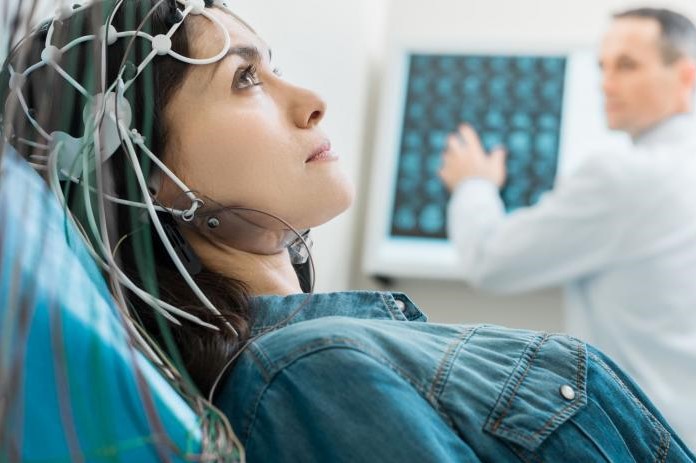
What is the electroencephalogram?
The electroencephalogram (EEG) is a diagnostic test which, through some electrodes positioned on the scalp, measures the electrical activity of the brain, reproducing it, on a screen, in the form of a series of
What is the electroencephalogram used for?
The electroencephalogram is mainly used for the diagnosis and monitoring of epilepsy.
It is also often prescribed to cancer patients, because both primary brain tumors and possible brain metastases caused by tumors of other organs can cause epilepsy.
It is also indicated in the presence of a suspicion of inflammation of the nervous system and to diagnose sleep disorders.
Finally, it can be useful as a complementary examination in case of headache, head trauma and other neurological diseases.
Who can take the exam?
The electroencephalogram is an examination that can be performed at any age and has no contraindications.
How is the electroencephalogram performed?
The patient is made to sit on a chair or bed to promote relaxation and the electrodes are applied.
Sometimes the electrodes are inserted on an elastic cap: through a syringe with a blunt needle a conductive gel is inserted on the electrode and, by moving the tip of the needle, the hair is moved to improve the positioning of the electrode.
Nothing is heard during recording.
It is mandatory to remain relaxed and still to optimize the recording of the brain electrical signal and to reduce movement and muscle artifacts.
The continuous fluctuation of normal cerebral activity induces, between the various points of the scalp, small differences in electric potential (millionths of a volt, microvolt) which are normally amplified and recorded for a few minutes (in particular cases up to 24 hours).
In this way, a trace is obtained which marks the voltage variations over time for each electrode.
Normally the electrodes are mounted in a fixed pattern (10-20 system) on all parts of the scalp.
Since each electrode reflects the activity of the closest part of the brain in the first line, the EEG is able to provide information not only on abnormal electrical activities, but also on their localization.
Is the electroencephalogram a painful and/or dangerous test?
The exam is neither painful nor dangerous.
During the execution, the only annoyance can be given by the need to remain still with your eyes closed, trying to relax all the muscles.
It may happen that while applying the electrodes you may slightly pull your hair.
Epilepsy sufferers may rarely have an attack, which can be triggered by having the lights turned on in front of the patient’s eyes to check their reactions.
Occasionally the gel used to glue the electrodes to the head can cause slight skin irritation.
Read Also
Emergency Live Even More…Live: Download The New Free App Of Your Newspaper For IOS And Android
Electroencephalogram: What Is The EEG For?
Emergency Room Access: Neurology Emergencies
Seizures In The Neonate: An Emergency That Needs To Be Addressed
Epileptic Seizures: How To Recognise Them And What To Do
Epilepsy Surgery: Routes To Remove Or Isolate Brain Areas Responsible For Seizures
First Aid And Medical Intervention In Epileptic Seizures: Convulsive Emergencies
Pre-Hospital Seizure Management In Paediatric Patients: Guidelines Using GRADE Methodology / PDF
New Epilepsy Warning Device Could Save Thousands Of Lives
Understanding Seizures And Epilepsy
First Aid And Epilepsy: How To Recognise A Seizure And Help A Patient
Childhood Epilepsy: How To Deal With Your Child?
What Is The Electrocardiogram (ECG)?


